


Your Annotated Bibliography and Project Overview is due this week.
Ray's and Myra's classes, please submit your assignments in hard copy either in class (unless otherwise organised) or in the assignment box in Building BB Werrington South (for Ray's students).
Christine's and Colin's classes please submit online via the link on the homepage of vUWS. The latest time for submission is Friday 5th April at 12.00 midnight.
Quick Links:
Portfolio Exercise 1: How does online communication differ from face-to-face communication?
Portfolio Exercise 2: The future of literacy in the information age
Portfolio Exercise 3: The internet – friend or foe?
Portfolio Exercise 4: How do electronic technologies impact on our work and personal lives?
Week 6 – Mediated Communication: it's communication Jim, but not as we know it!
Q: Consider the extent to which different electronic communication technologies such as email, SMS, mobile phones and social media like Facebook and Twitter etc, merely replace traditional forms of communication. Do they change the nature of the communication experience? Consider this question in reference to the perspectives of this week's readings.
... a century ago the world was remade. We synchronised the clocks for the sake of railroad schedules; we discovered through art and literature new ways to perceive time; the automobile reshaped our notions of distance and adjacency ... Now our world is being reshaped again, as result of computing and communications technology ... (Joy, 2000, 5)
As a society and culture, we are surrounded by an ever expanding array of different electronic or mediated communication technologies. Our social and work lives have been impacted greatly by these forms of communication, whether they be the internet, mobile phones, email and so on.
However, an important point to consider is the extent to which these technologies and the uses to which people put them, alter the nature of the communication process rather than merely become another medium of transmission. For example, has our preference for email over face-to-face communication or even telephone communication, changed how we communicate with people in terms of the language that we use, the way we write, the immediacy of the communication and the degree to which we feel connected?
These technologies traditionally have been referred to in academic research
as Computer-Mediated Communication
(CMC). These days the raft of new technologies like smart phones and tablet computers such as iPads, the term used has been shortened to Mediated Communication. The theme of the lecture is to explore the
implications of these developments.

For a detailed overview, read Chapter 5 of your textbook.
Mediated
Communication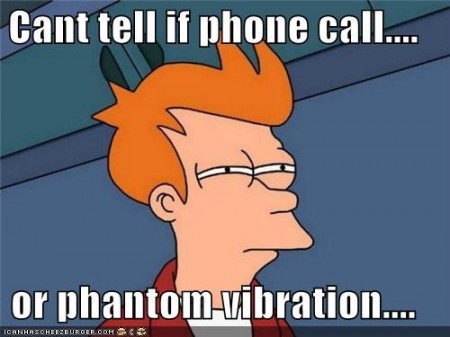
Mediated Communication has become a part of everyday life. Research has suggested that mediated communication is not neutral: it can cause many changes in the way people communicate with one another, and it can influence communication patterns and social networks (e.g., Fulk & Collins-Jarvis, 2001). In other words, the mediation leads to social effects.
Rice & Gattiker (2001) state that mediated communication, (previously known as CMC), differs from face-to-face communication. CMC limits the level of 'synchronicity of interaction' (that is, communication which takes place in the same time and space such as a face-to-face conversation). This in turn may reduce the level of interactivity in a communication. An example is the extent to which communications flow such as the depth of a conversation. Think of the difference between having a conversation with a number of friends on Facebook compared to having a conversation face-to-face.
While mediated can overcome the problems of being in the same physical time and space, there are various limitations resulting in many differences with face-to-face communication. Check out this site about online text relationships. There is also the problem of what our level of online engagement is doing to our brains. See some of the suggested readings at the bottom of the page. What about 'Phantom Vibration Syndrome'?
Portfolio Exercise 1: How does online communication differ from face-to-face communication?
Log
into a favourite chat room and observe some of the characteristics
of a conversation or examine the characteristics of a conversation you've had with a friend on Facebook. We don't need to know what the conversation was
about, but just how the participants communicated. Write about 300
words.
Some characteristics that you might look for include:

Short, Williams and Christie developed this theory in 1976. This approach is the groundwork for many theories on the impact of new media. The idea is that a medium’s social effects are principally caused by the degree of 'social presence' which it affords to its users. By social presence is meant a communicator’s sense of awareness of the presence of an interaction partner. Much social presence is communicated non verbally and this is important for the process by which people come to know and think about other people, their characteristics, qualities and inner states (Short et al., 1976). Thus, according to Short et al, increased presence leads to a better person perception.
In one of the readings for this week, psychologist Dr Edward Hallowell, comments on the impact of the declining 'human moment' in workplace communication. This lack of the 'human moment' he says, is one of the main causes of forms of workplace anxiety or 'toxic worry'. He also notes that in much electronic communication there is a lack of appreciation of that fact that a human being is behind the email for example. This problem results from a lack of 'social cues' in these media. In the abstract to his article, he writes:
In the last decade or so, technological changes – mainly voice mail and e-mail – have made a lot of face-to-face interaction unnecessary. Face-to-face contact has also fallen victim to "virtuality" – many people work at home or are otherwise off-site. Indeed, most people today can't imagine life without such technology and the freedom it grants. But Edward Hallowell, a noted psychiatrist who has been treating patients with anxiety disorders – many of them business executives – for more than 20 years, warns that we are in danger of losing what he calls the human moment: an authentic psychological encounter that can happen only when two people share the same physical space [http://www.ncbi.nlm.nih.gov/pubmed/10345392 retrieved 29/3/08].
The central assumption is that the absence of social cues in mediated communication is 'deindividuating', a state in which people lose their individuality because “group members do not feel they stand out as individuals” and individuals act if they are “submerged in the group” (Festinger, Pepitone & Newcomb, 1952). This diminishes the awareness of the self and the other leading to a diminished awareness of, and concern for, human beings and their feelings. This is highly relevant in both professional life and in social life because of the way we use email and social networking applications like Facebook and Twitter but also the freedom that many now feel when they post comments on news sites or internet blogs.
Marshall McLuhan & "the medium is the message".
Canadian media theorist Marshall
McLuhan famously coined the phrases "the medium is the message" and
the "global village" with respect to the impact of electronic
communication media on how humans interact. His seminal work was a book
called 'Understanding
Media' (1964) which was interestingly written long before the mass
use of the internet. Mark
Federman gives an overview of McLuhan in this link. Since then there
has been ongoing debate about the impact of various media on how we interact.
McLuhan's main arguments were: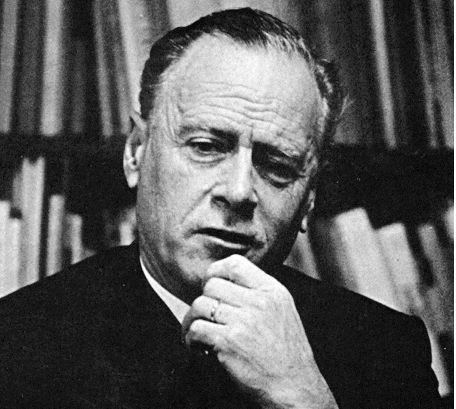
McLuhan's comments on television and how its impact on how we perceive the world is commented on in this 2003 article by Sarah Boxer in Melbourne's 'The Age' newspaper.
Portfolio Exercise 2: The medium is the message or the message is the medium? The future of literacy in the information age.
Read this dialogue between Sven Birkets in the "Gutenburg Elergies", who bemoaned what he saw as the decline in literacy due to the Communication Age, and Wen Stephenson from the "Atlantic Monthly" who wrote a reply titled The Message is the Medium.
Summarise the two arguments being made. Is Birkets right? Or is reading in the so-called "information age" different? Consider the arguments in this short article about the impact of using text language on literacy by Dale Spender, this article by Sue Butler editor of the Macquarie Dictionary or this article from Tony Self titled 'What if your readers can't read?'. Write about 300 words in your answer. Best marks will be awarded to those who answer with reference to a wider variety of sources.
Is the internet the panacea of all our social ills or is it a medium which is encouraging a decline in our social values and traditional ways of life? Or does it have the potential to do both? Our Dr Ray Archee has written a lot about this topic. He says that:
The Internet has in many ways permeated our real lives. These days, we cannot view an advertisement in the media without some mention of a website, or email address. A few years ago the catch phrase was ‘Virtual Reality’, then the media seized upon ‘The Information Superhighway’, these days it is ‘cyberspace’ and the ‘Internet’, which have become vogue expressions.
In
his 2007 book, 'The
Cult of the Amateur', Andrew Keen writes that: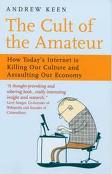
Our most valued cultural institutions - our professional newspapers,magazines, music, and movies - are being overtaken by an avalanche of amateur, user-generated free content.In today's self-broadcasting culture, where amateurism is celebrated and anyone with an opinion, however ill-informed, can publish a blog, post a video on YouTube, or change an entry on Wikipedia, the distinction between trained expert and uninformed amateur becomes dangerously blurred. When anonymous bloggers and videographers, unconstrained by professional standards or editorial filters, can alter the public debate and manipulate public opinion, truth becomes a commodity to be bought, sold, packaged, and reinvented.
Portfolio Exercise 3: The internet: friend or foe?
Read the full version of Archee's (2003) article titled Critiquing the Internet and answer the following questions.
a. To what extent do the arguments outlined here differ from those traditional claims about the impact of the internet on communication?
b. What do you see as the shortcomings of the web or other electronic technologies as a communication tool? You can refer to Nicholas Carr's argument in The Shallows or William Power's points in his book Hamlet's Blackberry. Alternatively you can read a review.
c. What do you believe are its strengths (personal as well as global – try to think past the idea of convenience and time saving?)
d. Archee argues that the web both brings people together but can also move people apart. Why is this? How does this relate to what Hallowell (1999) argues in his article The Human Moment at Work? (a copy can be found here under the 'Tutorial Readings' tab above).
Best marks will be awarded to those who answer with reference to a wide variety of sources.
The
impact of electronic mediated communication on work & personal relationships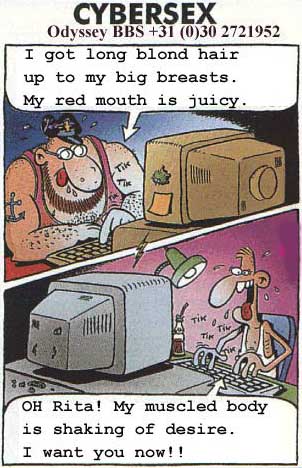
The internet and other electronic technologies have spawned a vast array of research looking at how the various technologies such as mobile phones, email and chat and social media sites like Facebook and Twitter have impacted on our interpersonal relationships.
Much of the focus of researchers relates to the ability for people to be anonymous and to create onlne personalities which may be a long way from their real-world selves. A former UWS researcher, Dr Monica Whitty, has done research into 'cybercheating' and the extent to which couples perceive it in the same way as real-world infidelity. Read this transcript of an interview with her on the subject
Some researchers have looked at the differences in online vs real-world relationships. Here's an example of an article titled "Online Relationships - Liars or Friends?". Other research interests include the potential for cyberporn or cybersex addiction.
Further to his earlier cited work on "The Human Moment At Work", Dr Edward Hallowell has recently written about what he calls "cyberbusyness" or the ability of electronic communication technologies to eat into our real world time. Another recent newspaper article is intriguingly titled "My iPod Ate My Brain" which looks at our need to fill our days with stimulation and distractions. As you can see there is no shortage of interest in aspects of electronic or mediated communication.
Portfolio Exercise 4: How do electronic technologies impact on our work and personal lives?
Using the database Factiva
(available via the UWS library under “E-Resources”), choose one
(1) of the suggested topics and find at least three (3)
recent newspaper articles and summarise the arguments made.
Do you agree/disagree, why/why not? Write about 300 words. Set out the references
to these articles correctly (see APA style guide).
Suggested topics/themes include:
This is the 60 Minutes report about celebrity Charlotte Dawson and the dangers of Twitter trolls. Here is one news story around this.
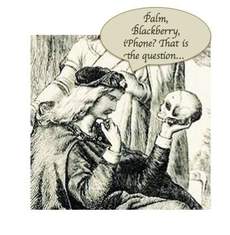
Much has also been written about email etiquette and problems which have arisen from our disregard of the norms and characteristics of this important communication medium. Here's an online journal article titled "You've got mail … " .
With all of the electronic communication media available to use, there are a few risks we need to be aware of an rules that we must consider.
Check out Tom Van Vleck's page on Risks of Electronic Communication.
On email etiquette and potential dangers, check out Death by a thousand emails and Managing the Email Epidemic. You might also want to read this relatively recent journal article by Australian academic Susan Yell on the impact of converging communication practices in the workplace.
Consider the arguments being made by Will Power in his book Hamlet's Blackberry about the difficulty some people now have with switching off. Are we becoming addicted to our devices to our detriment?
Finally,
here are some news articles that offer additional perspectives you might find interesting. Do you agree with their arguments?
Too quiet in the walled garden: Are the proprietory devices we are using 'censoring' what we can access?
The web shatters focus: rewires brains: This looks at research into what happens to our brains when we are online.
Education in the information age: is technology making us stupid? Does all this online educational material make students helpless?
Feelings and Facebook: grief in social media: What is the impact of using Social Media to express grief?
Outsourcing memory: the internet has changed how we remember: The imperative to remember information has been replaced with the imperative to remember where information is located
Over the web, loose lips can sink more than ships: For too many people, electronic communication has become little more than a stream of consciousness.
Our textbook has been newly revised especially for this unit. Most lectures and many class activities will be based on the book, so we recommend that all students have access to a copy and bring it to class every week. Copies will be made available in the Library Closed Reserve.
In addition, class discussions and presentations will be based on more specific readings on the weekly topic. These can be found under the 'Tutorial Readings' tab at the top of this page.